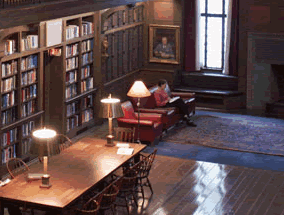| Sterling Memorial |
| Archives |
| Music |
| Divinity |
| Forestry |
| Kline Sciences |
| Medical Historical |
| Exhibit Map |
| Louis Pasteur, Etudes sur la Biere,
1860
Dumas and Bernard inspired Louis Pasteur with their vision of life. trained initially in chemistry, Pasteur eventually strove to understand the role of oxidation in fermentation, combustion, and putrefaction and how these processes fueled the “cycle of life.” Pasteur based his view of life on the tenet that “it is a law of the universe that all that has lived disappears.” he described the “cycle of life” as an “absolutely necessary exchange of mineral and gaseous substances” from living beings back to the soil and atmosphere. Only death, and death’s effect, decay, he said, could cause living organisms to release the simple and mobile principles that made up their bodies. The instrument depicted in the book (and below) is a Geissler chamber (glass tube with a built-in reservoir) connected to bottles of a nutritive solution and mounted on a microscope. Pasteur used this to fulfill Bernard’s holistic physiology, however, now the entire complexity of the living organism was collapsed into the single-cell of a microbe. |
| Case 1 |
| Case 2 |
| Case 3 |
| Case 4 |
| Case 5 |
| Case 6 |
| Case 7 |
| Case 8 |
Whitney Humanities Center
Yale University
53 Wall Street
P.O. Box 208298
New Haven, CT 06520-8298
Office: (203).432.3112
lloydackert@sbcglobal.net
Yale University School of Medicine Building
333 Cedar Street
New Haven, CT
Map, Directions
